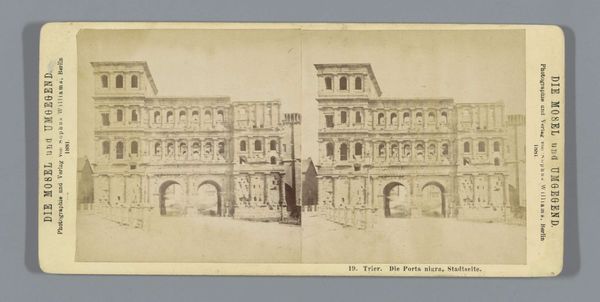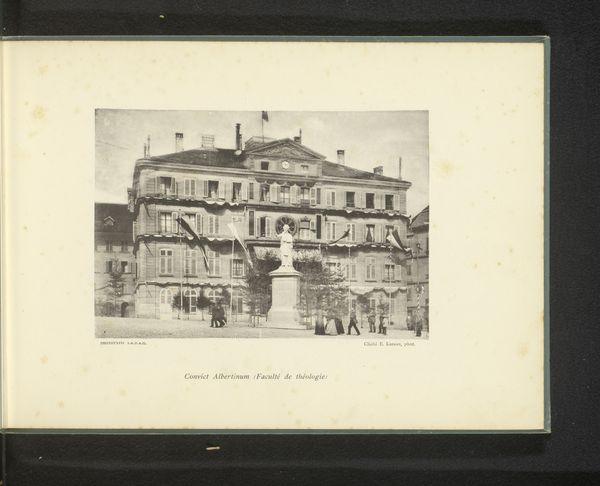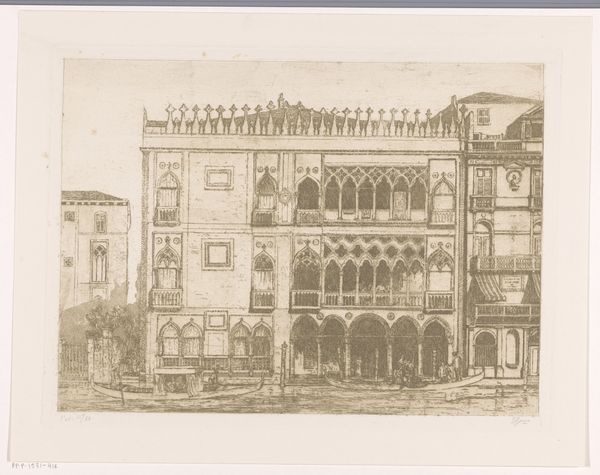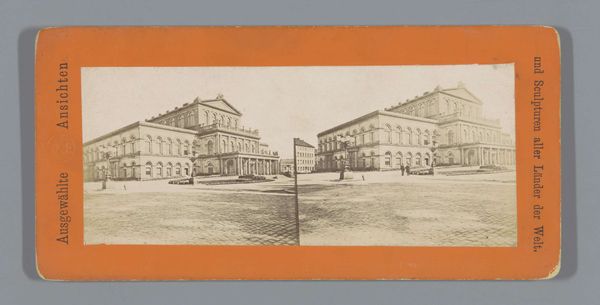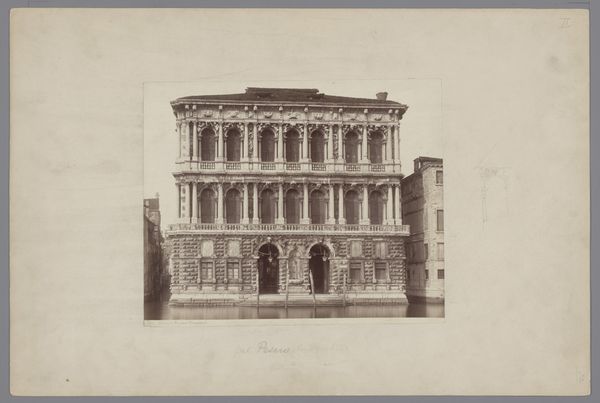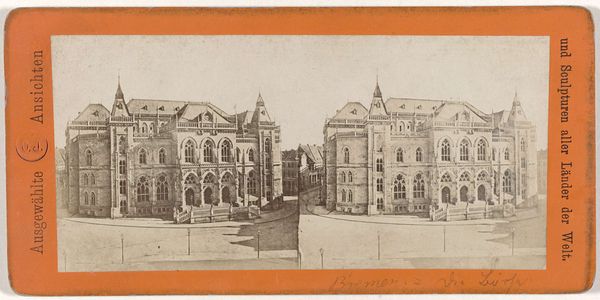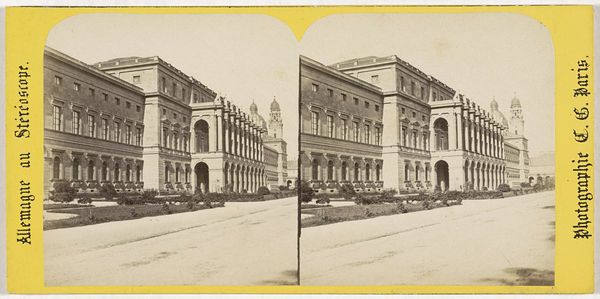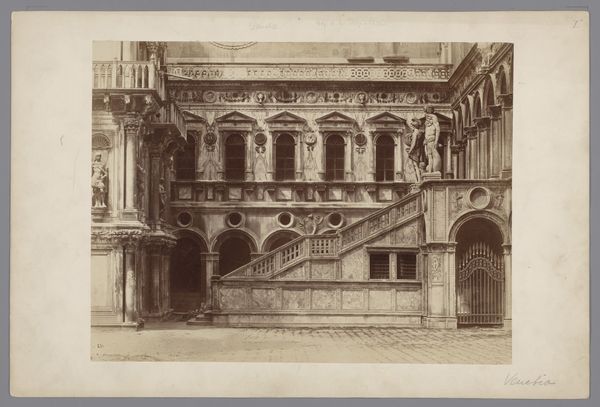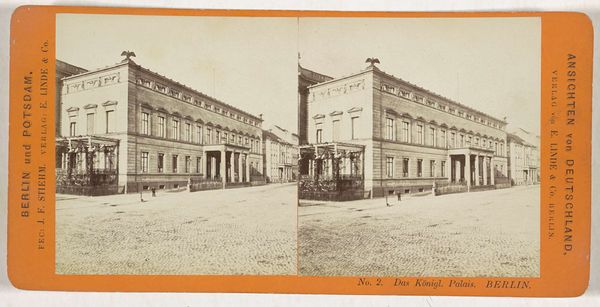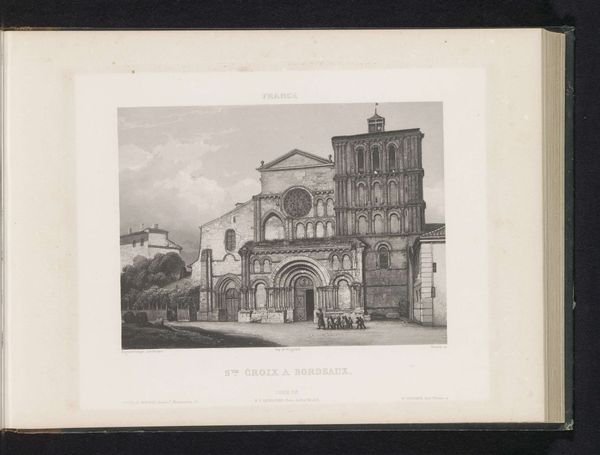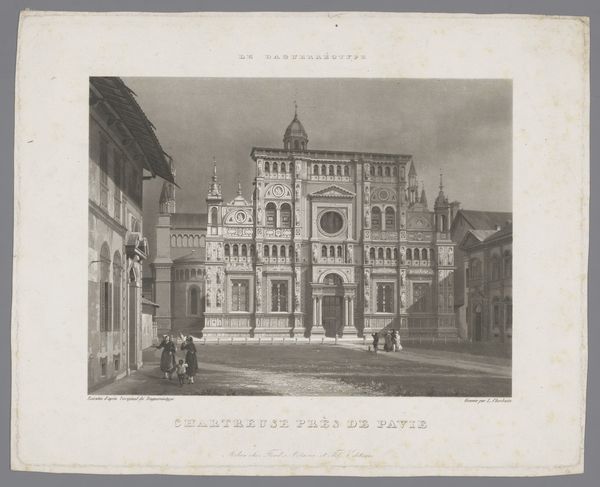
print, photography, albumen-print
# print
#
landscape
#
photography
#
cityscape
#
paper medium
#
albumen-print
#
realism
Dimensions: height 85 mm, width 170 mm
Copyright: Rijks Museum: Open Domain
Curator: This albumen print, "Porta Nigra te Trier," dating back to 1881, comes to us through the lens of Sophus Williams. It’s interesting how this particular printing process, imbuing it with sepia tones, shifts one’s experience of such a significant structure. Editor: It's melancholic. Something about the muted tones gives a feeling of standing at a great distance in time, as though gazing into antiquity, rather than simply looking at an image of it. There is the sense that you can almost smell history, you know? Curator: Absolutely, it pulls us back. The Porta Nigra was constructed in the late 2nd century. There’s a grandeur here that speaks to Roman engineering. You’re encountering a potent symbol of the Roman Empire’s reach, persisting well into 19th century sensibilities through William's choice of perspective. Editor: This is one of the northern gates of the old Roman Empire, isn’t it? It feels very stoic in appearance, doesn't it? Like a solid guardian and, even in ruins, carries the echo of power, a gate between then and now. But looking at the architectural details... so much damage has occurred. You see this process and passage of the decay throughout time. What could that stand for? Curator: Indeed, a visual metaphor for shifting power and fallen empires, perhaps? Or simply the indifference of time to even the most formidable structures? I love that Williams focused the image with those in mind: its endurance is almost mocking. Think of what has changed since its construction; it's not merely old, but permanent against the transient backdrop of human history. Editor: It definitely has that presence; a statement in stone, aged yet unbowed. A poignant paradox... to capture something monumental rendered slightly fragile, beautifully done. It’s not just about capturing an image, but channeling the spirit of the space, so to speak. Curator: Precisely. Williams provides not just an image of a gate, but almost an artifact encapsulating centuries. And so, this becomes another piece in its incredible story. Editor: Agreed. Thinking about the image and Sophus Williams, it truly provides a doorway, doesn't it? Not only into Trier, but also the contemplation of eras gone.
Comments
No comments
Be the first to comment and join the conversation on the ultimate creative platform.
